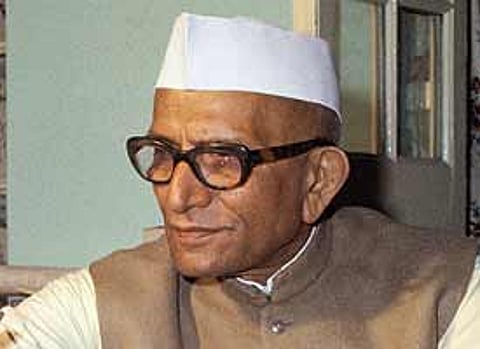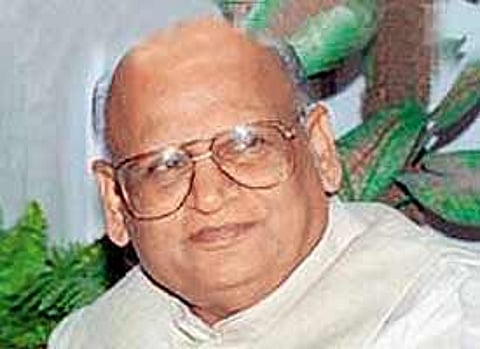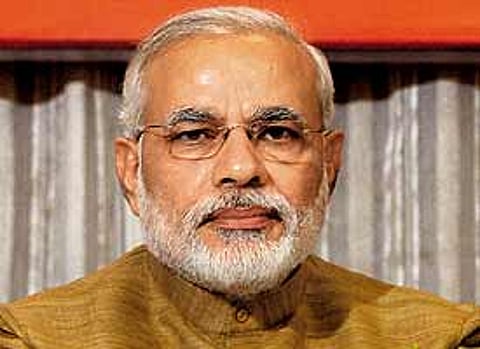Gujarati By Nature
The Gujarat Model Of Politician
Gandhi and Modi, two men who couldn’t have been more different, but born of the same soil that also gave us Sardar Patel and Jinnah
What’s (generally) common to Gujarati rajneeti
- Gandhi and Jinnah played a stellar role in the creation of India, Pakistan
- Modi’s approach to nationalism throwback to Sardar Patel’s
- Barring Morarji Desai who became PM, few had any national appeal
- Navnirman Andolan forced out Chimanbhai Patel, preceded JP
- Congress’s KHAM alliance stirred caste pot before Mandal politics
- Madhavsinh Solanki key aide to Rajiv Gandhi; Ahmed Patel to Sonia
- Shankersinh Vaghela, when in BJP, pioneered “resort politics”
- Mostly male-dominated politics, Anandiben Patel as CM is aberration
***
After May 16, we can certainly now look to Gujarat as the state that has given India some of its most significant leaders. There must always first be Mohandas Karamchand Gandhi, born in Porbandar on the coast of Gujarat and till today the most famous Indian name across the world. Prime Minister Narendra Modi shares little with Gandhi besides the fact of having been born in Gujarat and having a strong personal commitment to vegetarianism and prohibition. From Gandhi to Modi, surely we are travelling to the opposite pole of the multitude of impulses that drive our nation?
Yet just as we must know our past and understand Gandhi, we can also try and forecast the future and wonder whether Modi would, for altogether different reasons, become a figure for the world to know beyond the polarising figure who was denied some visas. Given the drive and application of a campaign that converted 31 per cent of the Indian vote to 52 per cent of the seats in Parliament, let it be said that he is the second born-in-Gujarat Indian leader who is poised to make an impact not just nationally but on the international platform as well. Having become the prime minister of the world’s largest democracy, he has the personality, the authority, the ambition and drive to become one of the heads of state who will become a familiar name across the globe. He seems poised to join the world stage of “Absolute” leaders, celebrated by western economic institutions and the media as someone who will forcefully set out to implement a right-wing economic agenda. After the relatively insignificant impact (in sum) of Prime Minister Manmohan Singh, Modi will be noticed when he gets down to doing business with the world.
So what is the Gujarati political genius all about? There is first the paradox that a state known for its great business instinct has actually produced very successful politicians and leaders. Could it be the pragmatism that works, the understanding of the profit margin? There are no absolute answers as trends are best understood in their nuances. Achyut Yagnik, author of The Shaping of Modern Gujarat, says that “Gandhi and Modi are poles apart and cannot be compared. But as for Modi’s character, it has been influenced by the mercantile ethos of Gujarat, combined with the RSS background, although he is not particularly religious himself. There is also a great preference for modern technology.” The tradition of authoritarian leadership, he goes on to say, began in Gujarat with Sardar Patel. There would subsequently be strong Congress leaders like Morarji Desai, known as the sarvochaya (supreme) leader when he was the chief minister of the pre-split Bombay state that included Gujarat, carved out as a separate state in 1960. Later, another Congress CM, Chimanbhai Patel, would be referred to as Chhote Sardar. Modi too was called “chhote sardar” after 2002, though now he may be described as so much more...

M.A. Jinnah The ‘liberal’ divisive Gujarati
Ironically, then, it was the Congress that had the strong state leader tradition in Gujarat post-Sardar Patel. This trait of Patel’s, along with his reconstruction of the Somnath temple, are the reason why he was always the role model for the BJP that has worked hard to appropriate his legacy. To some extent, they have also tried to appropriate Gandhi’s legacy although that has been a little harder to achieve. Still, it cannot be forgotten that, far removed from the simplicity of Gandhi’s Sabarmati ashram, Modi has built a state-of-the-art structure called Mahatma Mandir which hosts most global conferences in Gujarat. PM Modi is certainly the gleaming, shining, new-age leader of Gujarat and now of an India that has been convinced of his model. No crumpled white khadi or dhoti for him; instead he wears contrasting shades in impeccably cut and neatly ironed kurta and churidar pyjamas.
By becoming the absolute leader in Gujarat, Modi had actually changed the tradition in the BJP. Since the party defeated the Congress in 1995, and in the six years before Modi became CM, there was great infighting in the state unit. BJP chief ministers like Keshubhai Patel, Suresh Mehta and Shankersinh Vaghela were never able to subdue all the factions and dissident activity within the party. All that changed after Modi took over in 2001. It was he who prevailed and once he did so there has been no looking back, whether it has been the three terms in Gujarat or in his journey to being India’s prime minister.
***
Same Cho: The Gujarati Strongmen


| Vallabhbhai Patel, the original supreme leader of the Gujarat Congress. He heralds the tradition of the tough Gujarati leader, steering the accession of princely states. | Morarji Desai, the other Gujarati to become PM. Chief minister of Bombay state that included Gujarat, he was to attain considerable fame for his somewhat liquid diet. | |


| Chimanbhai Patel, former CM who was described as the ‘Chhote Sardar’. Felled by the Navnirman Andolan, which was a precursor to JP’s Emergency movement. | Narendra Modi, first BJP leader from Gujarat who emerges as the absolute national leader in TV age, with a firm hold over the party and the government. |
***
It has, however, been said that you can take the boy out of the country but you can’t take the country out of the boy. Sources reveal that Modi worked at toning down his “Gujaratiness” and evolving a less distinct regional personality in the course of the elaborate plan to conquer India. He took constant feedback from individuals. He was told that there is a certain bluntness to Gujarati rhetoric that must be nuanced differently. He was advised about ambiguity and adopting a relatively softer tone. He did so in his own way, says a source. What shall not change is his love for Gujarati food and Modi is known to often prefer to eat alone after a hard day’s work.
Some of the people who gave Modi inputs also say that he is also one of the best listeners. Indeed, much has been written about Modi’s RSS origins, early life and politics in several biographies, but what has not been explored are his dealings with relatively sophisticated Gujaratis both in India and abroad. Says a source, “The biographers have all completely missed out on how he has reached out to westernised people also, and they give him a window to other things he is not presumed to know about. People have mostly focused on his RSS background.” These Modi enthusiasts who are not from the formal BJP structure now say that contrary to the image of his having limited interests, Modi is curious about things he has not been exposed to in his own life, due to class and ideological constraints.
What is certain is that the quite influential Gujarati diaspora across the world will continue to play a role in the projection of Modi on the world stage. Already a diaspora Gujarati has played a pivotal role in the Modi campaign. Traditional BJP leaders acknowledge that Manoj Ladwa, LSE graduate, solicitor and expert on FDI in India, changed the entire process and approach to Campaign 2014. In the UK, Ladwa is a member of the Labour Party and chairman of its community engagement forum, and therefore much more than your regular enthusiastic Gujarati NRI or Hindutva stormtrooper. Founder of the MLS Chase Group plus India Inc, he headed a group called RAM (Research, Analysis, Messaging) that operated from the BJP’s party headquarters at Delhi’s Ashoka Road whose brief was to “amplify the Modi message” to the maximum and provide the spin to spokespersons across the country.
Through the night, 12-15 researchers would follow the news, by 8 am there would be a summary of what could possibly be said; by 9.30 am, this would be gone over with spokespersons; in another hour, a briefing note would be prepared, and by 1 pm, an audio bridge to 250-300 spokespeople in different states linked up. Most critically, the content was carefully calibrated. Indeed, it could be said that Ladwa is the other Gujarati besides Amit Shah who made it all possible. Although Ladwa’s closeness to Modi is now getting known (Modi himself asked him to handle communications), he prefers to work below the radar. He’s also said to be behind the change of colour of the BJP’s lotus from saffron to black-and-white, a change effected quietly without much ado in February this year. It was done in order to make the symbol “exactly” what voters would see on the EVMs. Ask Ladwa what links Gandhi to Modi, and pat comes his reply: “If we must look at things from such a perspective, then we can say that after Gandhi, Modi was the first Indian leader who had such a connect with the diaspora across the world, both Gujarati and non-Gujarati.”

To Higher Office With Shankersinh Vaghela at his 2014 farewell
From Gandhinagar, Modi also cultivated certain pan-Indian connections. Sources say that while he was the CM of Gujarat, he always tried to keep in touch and respond to those who operated from other states and the national capital. Says an insider to the Modi circle, “He would call to get a perspective about a development in another state even before he became a PM candidate, unlike most strong state leaders who tend to become rather insular.” In hindsight, it can be said that from Gandhinagar, Modi had his eye on the rest of the nation, just as from New Delhi he shall now view the world.
Now Modi has joined the pantheon of leaders of Gujarati origin who changed the world around them. There is yet another Gujarati in the list, Mohammed Ali Jinnah, founder of the Two-Nation Theory and Pakistan. He played a communal politics that led to much bloodshed although he is said to have been actually a liberal. Modi has never been called a liberal and he would possibly be amused were he ever to be described as one. But would this subaltern hero from Gujarat show a greater generosity in his spirit and his politics now that he will shift to Race Course Road and has acquired a certain grandeur with a convincing win?